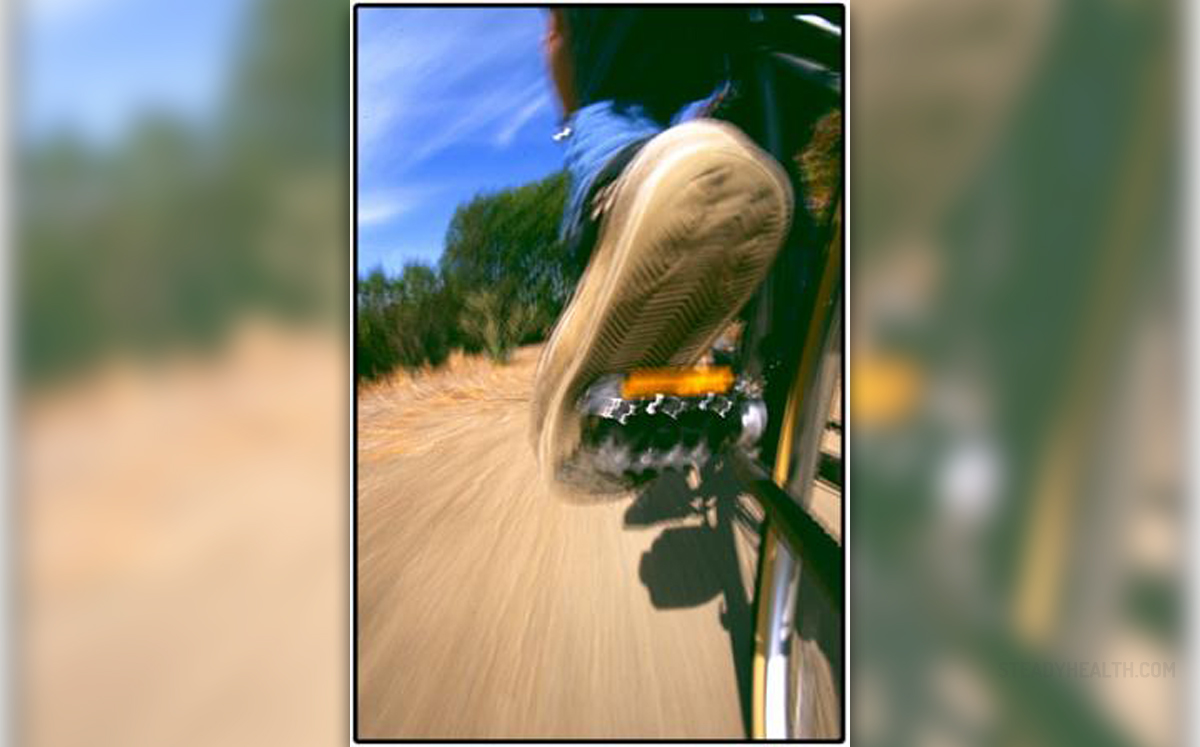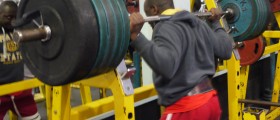
Downhill is a mountain bike discipline that is usually regarded as inferior - there is not much challenge in letting gravity do all the work, right? Well, not really, there is much to do, even more if you are into downhill racing. Muscles you don't know exist are put under enormous strain in order to keep the bike going where you want it to go and keeping yourself on the bike. Muscles need oxygen to work. There may not be enough. The path is treacherous, it takes skill and reflexes to stay on it.
There are other riders right next to you and they compete against you. You need to be faster than them. You will need to brake only when it is needed, no more than is needed, and you will have to pedal hard to catch up with those milliseconds you just blew through your caliper or through a too wide turn. What could you possibly do?
Hibernation is for bears
It's going to be a long winter, and it's going to be a good time to visit the gym and work on those muscles. Go for less weight an more repetitions, as this will build muscle endurance. Exercise two or three times a week, and make at least a day long pause between visits to the gym - muscles grow strong after the exercise, while resting. Once the season begins, do not jump start into it, as all the important competitions are held in fall. Early racers are used to keep focused and to set you in racing mode, while top shape is to be targeted at important races in the later part of the season.
Improve abilities
Every Aspiring racer must develop superb reflexes and be able to react instantly, to be able "to snap". This brings advantage in race starts, which prove to be crucial for later course of the race. Improving "snap" is exercised by either simulating races or exercising full-scale sprints (preferably up a slight incline) from a standstill. In either case, goal is to start as quickly as possible and gain as much speed as possible in shortest time, which brings us to sprinting. Exercise full power bursts at high cadence and short periods (10-20 seconds) and get ready to embrace pain, as this will hurt. You should exercise both uphill and downhill sprints, and track sprints are also an option.
Another vital aspect of racing is anaerobic capacity. Training for anaerobic capacity is the worst nightmare of every racer, and, as such, cannot be avoided. Professional help and advice on this type of training is recommended.
Be sure that your heart rate has dropped enough between the repetitions (120-125 beats per minute)Remember that fit does not equal skilled. Skill practice is all about focus, identifying a weakness and overcoming it. Practice all skills. Do not forget to exercise fundamental skills, as you will never master advanced techniques without them. Be honest to yourself in acknowledging that you do this or that poorly and strive to improve it.
Take it easy
Downhill racing involves an element of risk that is nothing short of serious. Watch out for injuries and know when it's worth the risk. Injury from an unimportant event may hamper you on a big race. It is also much more fun to take it easy today and ride again tomorrow than to let other riders sign on your body cast.

















Your thoughts on this
Loading...